In football, transitions are moments that often determine the outcome of a match. The ability to react quickly when gaining or losing possession can be the difference between creating a scoring opportunity or conceding one. Transition drills are essential in developing players’ tactical awareness, decision-making, and overall responsiveness to these pivotal moments. In this article, we’ll explore the importance of transition drills and provide examples to improve your team’s reaction to both gaining and losing possession.
The Importance of Transition in Football
The concept of transition in football refers to the moments when possession changes from one team to the other. These transitions are divided into two main phases:
- Positive Transition (Gaining Possession) – When your team wins the ball and quickly shifts into an attacking mindset, creating opportunities before the opposition can reorganize.
- Negative Transition (Losing Possession) – When your team loses possession and must quickly transition to a defensive structure to prevent the opposition from exploiting the situation.
Both types of transitions require fast reactions, adaptability, and clear tactical understanding. The speed at which players can adjust to these moments often influences whether their team can capitalize on the situation or recover defensively.
Key Elements of Transition Drills
- Speed and Awareness
The primary goal of transition drills is to improve a player’s ability to make decisions quickly. Whether moving into attack or tracking back to defend, players must recognize key situations and respond instantly. - Team Coordination
Transition isn’t just about individual skill—it’s about how well the team works together. Drills should emphasize communication, understanding positioning, and ensuring the team maintains balance during transitions. - Decision-Making
Players must be trained to make decisions based on the situation—whether to press, track back, or distribute the ball quickly when possession is gained or lost. This decision-making can often be the difference between a successful transition and a missed opportunity.
Transition Drills for Gaining Possession
Counterattack Drill
Set up two teams: one defending and one attacking. The defenders must win the ball and immediately transition into an attacking position, trying to score in a small goal or at a target area. The attacking team has to react quickly to gain possession and take advantage of the disorganized defense.
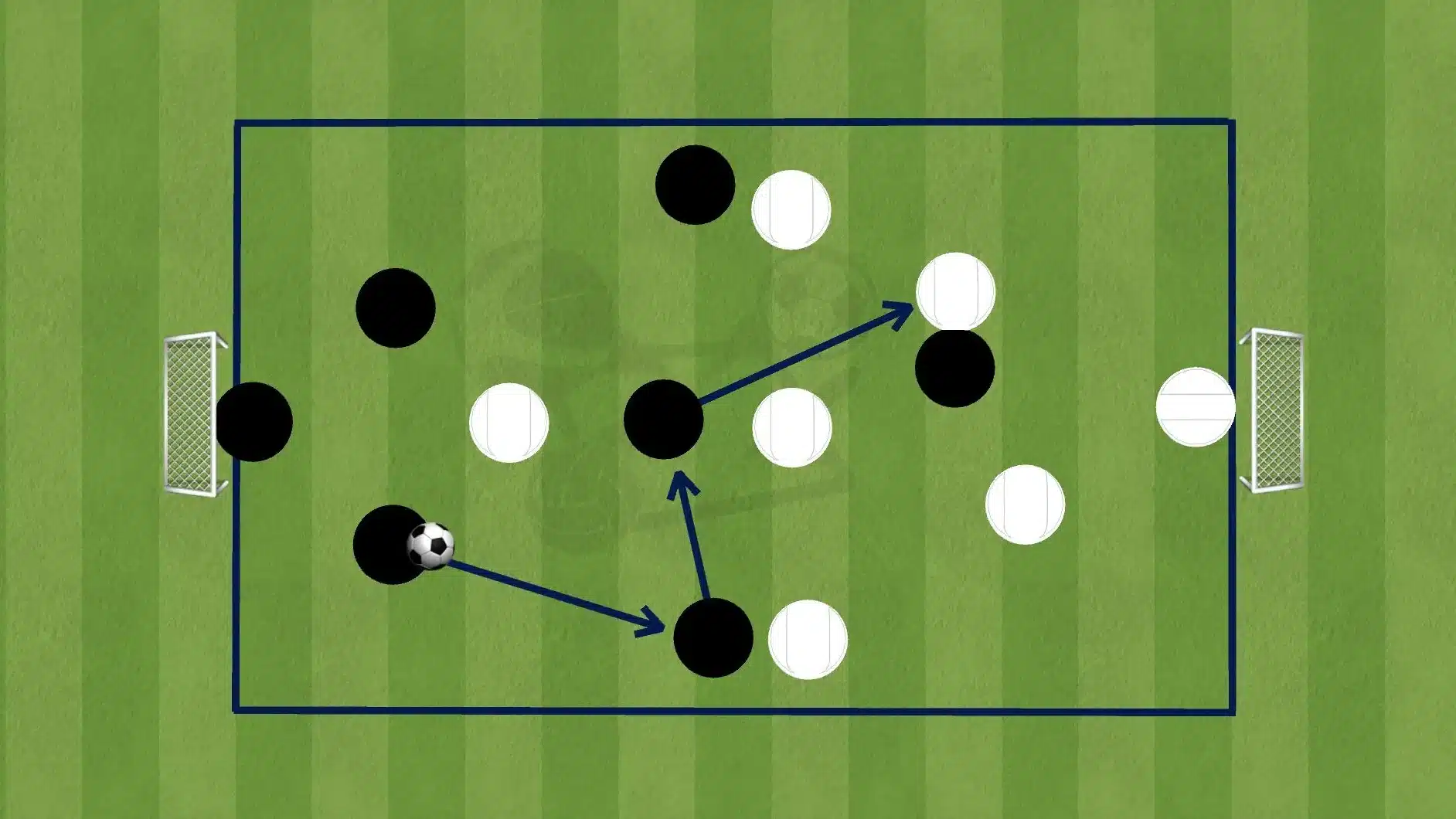
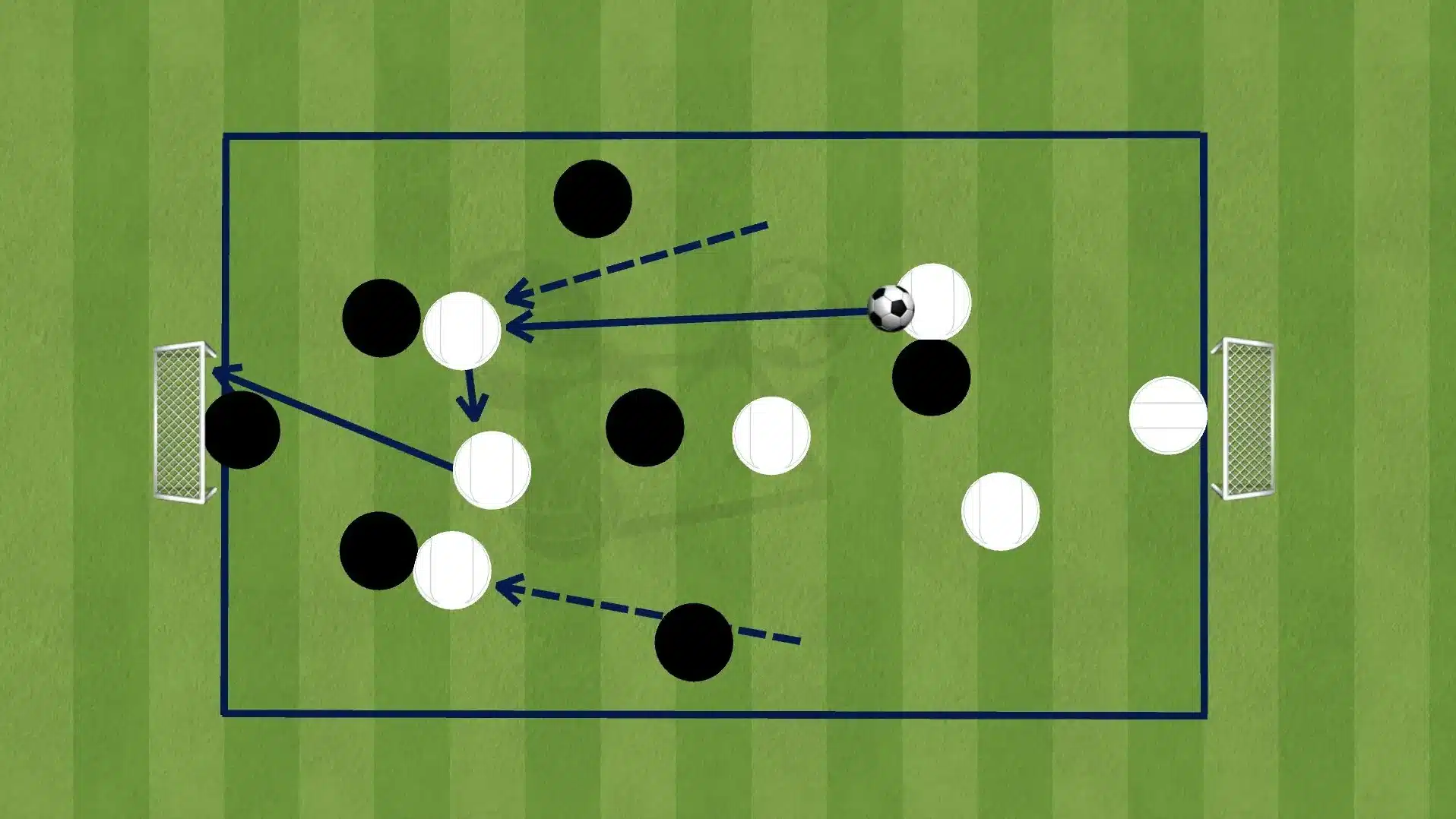
Key Focus:
- Quick distribution after winning possession.
- Sprinting into attacking positions before the defense can recover.
- Exploiting space and numerical advantages.
Four vs. Four Possession Game
Organize a small-sided game where two teams of four players each compete to keep possession of the ball. When one team loses possession, the other team must transition to an attacking phase. The focus should be on fast ball movement and creating opportunities to exploit open spaces.
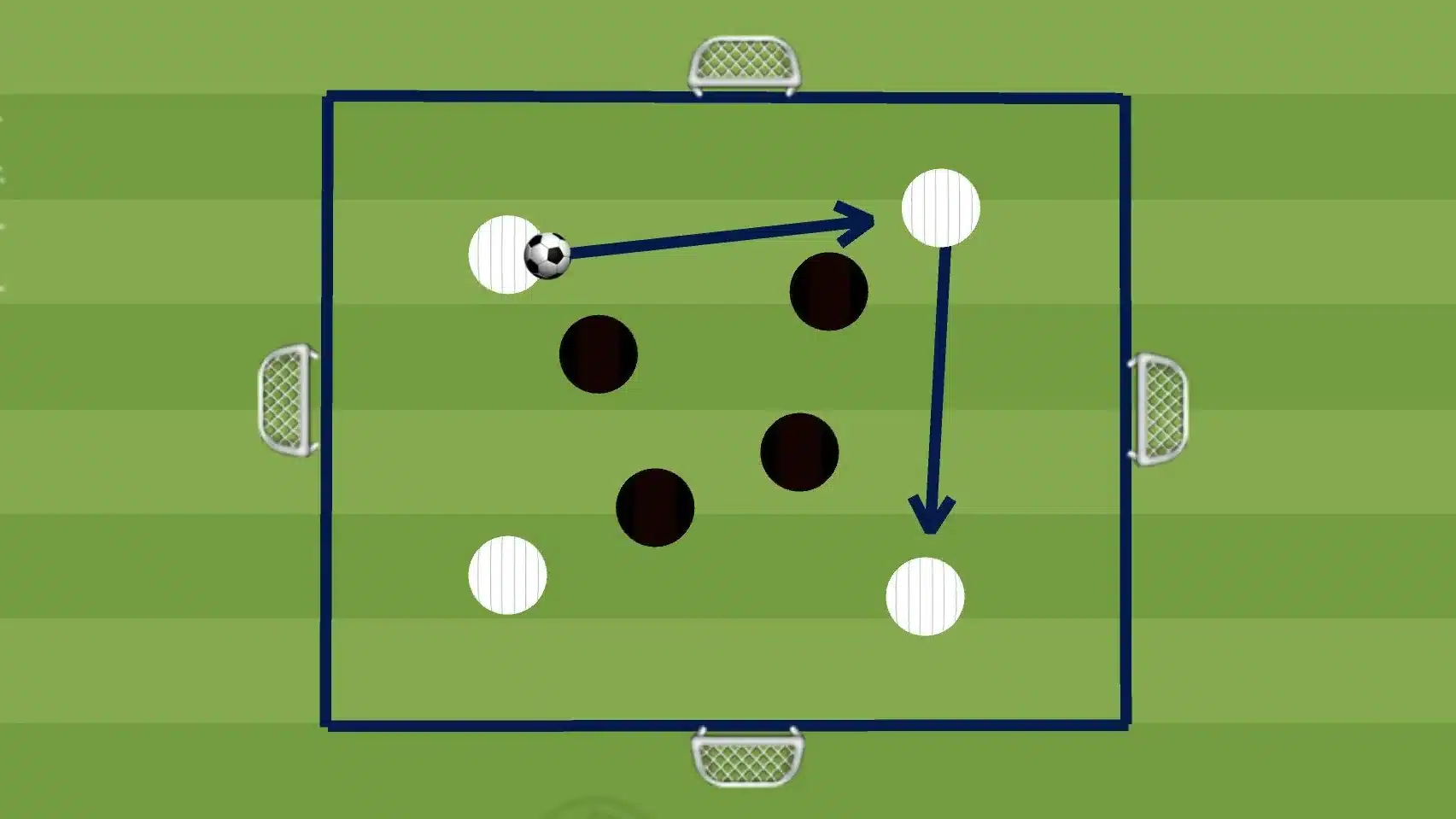
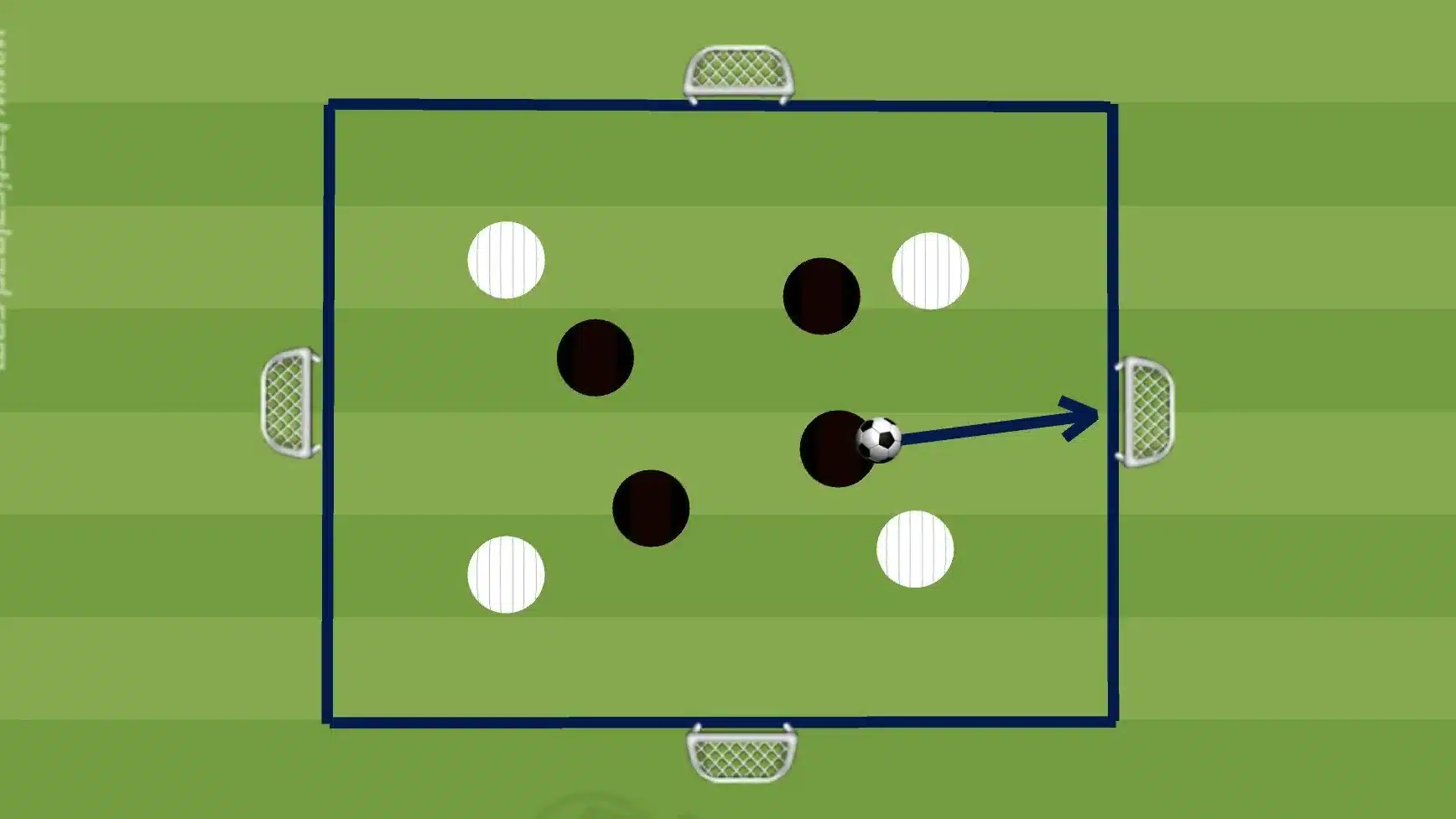
Key Focus:
- Quick passing and movement to break down opposition defenses.
- Pressing immediately when possession is regained to capitalize on the moment.
- Transitioning quickly to offensive play.
Want more counterattacking drills? Check out this article: Counterattacking Drills – Speed and Precision on the Break
Transition Drills for Losing Possession
Defensive Recovery Drill
In this drill, one team attacks while the other defends. Upon losing possession, the defending team must immediately react and quickly recover to prevent a counterattack. The focus is on speed, decision-making, and covering defensive spaces efficiently.
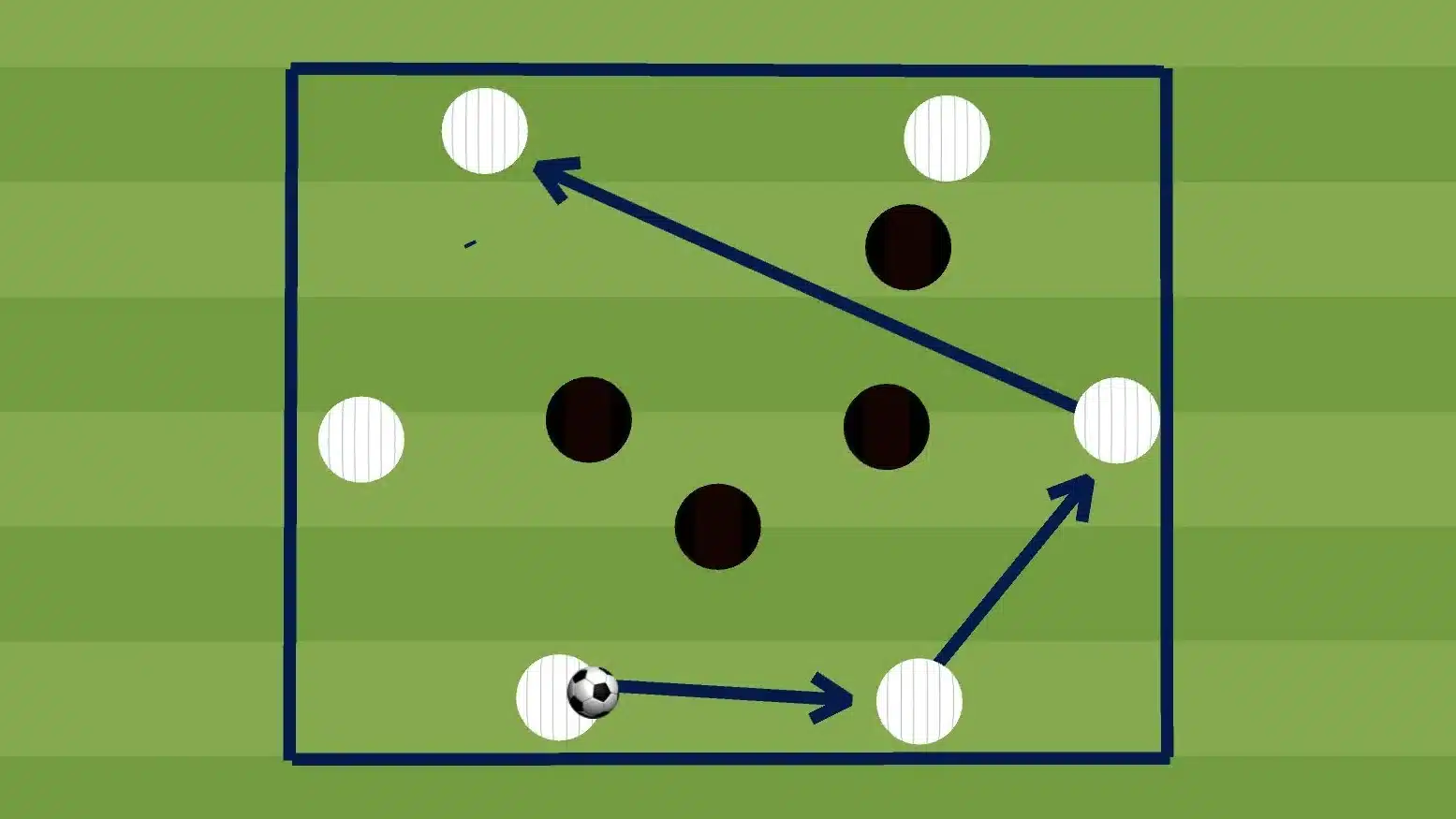
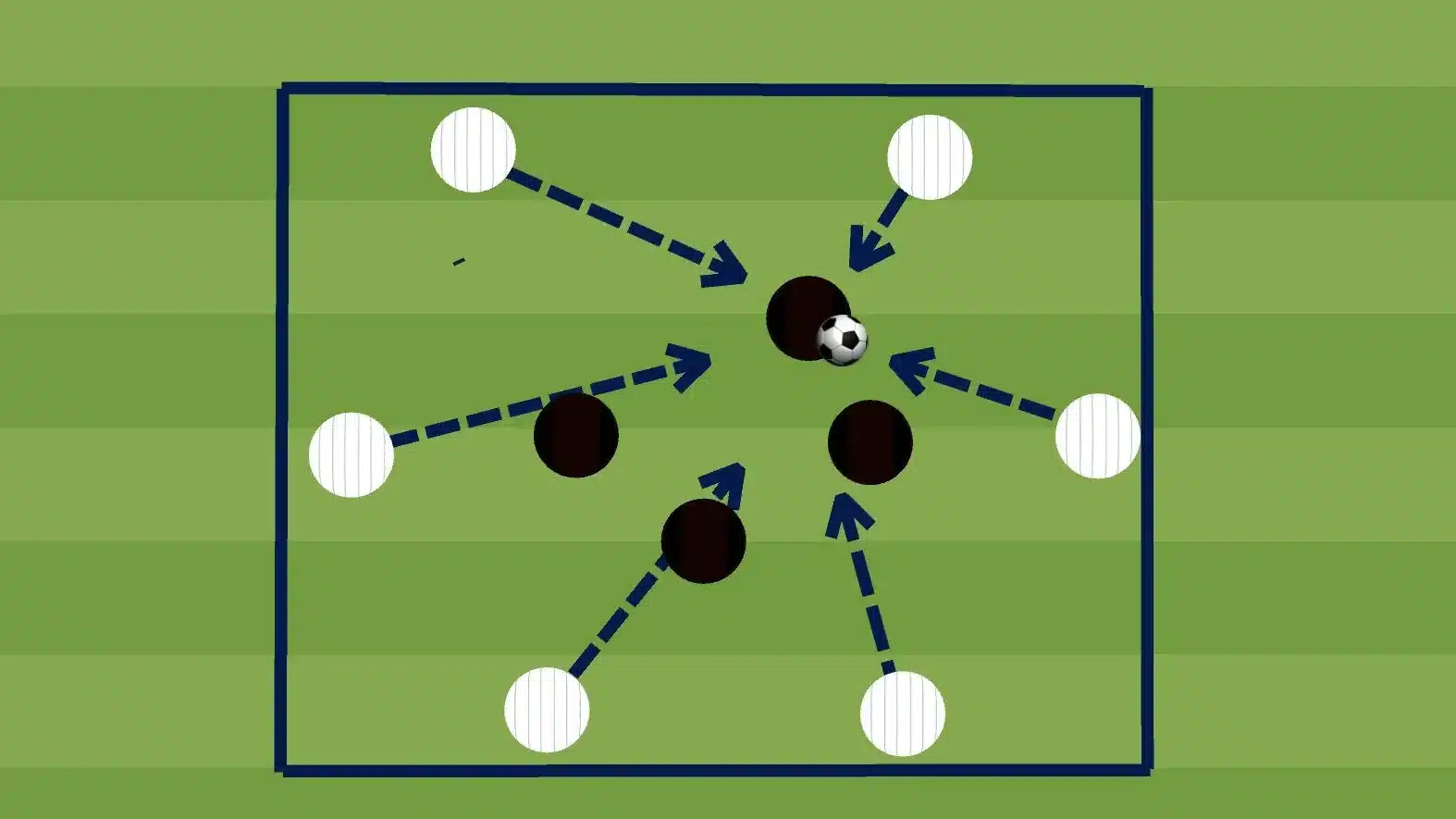
Key Focus:
- Quick and organized defensive recovery.
- Pressing and tracking runners during transitions.
- Maintaining defensive shape and compactness after losing possession.
2v2 Pressing Drill
Set up a small 2v2 scenario in which the attackers focus on quickly exploiting spaces, while the defenders work on regaining possession. Upon losing the ball, the defending pair must react and immediately press to win back possession before the attackers can capitalize.
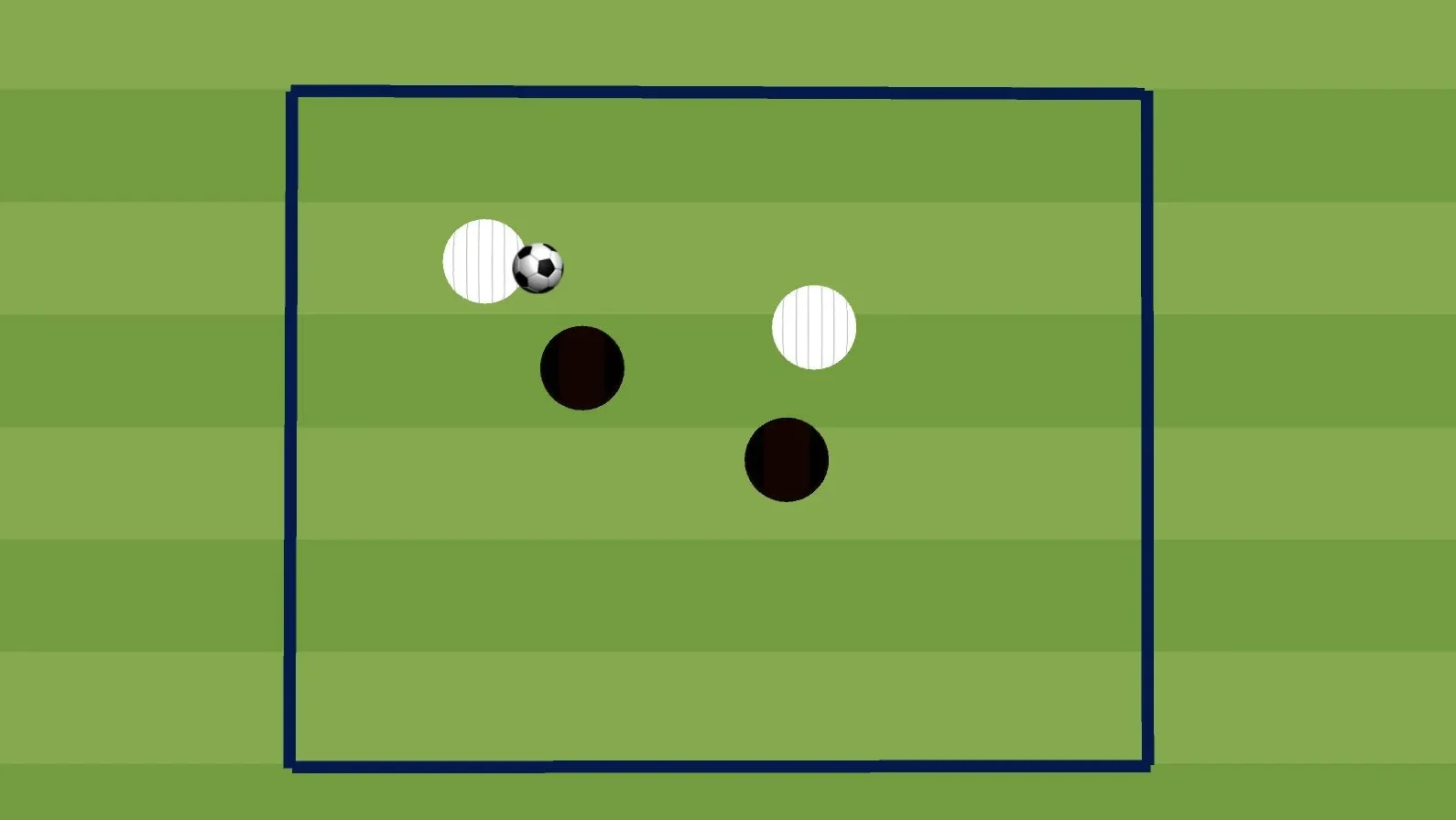
Key Focus:
- Immediate pressing to recover possession.
- Communication and coordination between defenders to close down options.
- Staying compact and minimizing space for attackers.
Tips for Effective Transition Drills
- Simulate Game Situations: The best way to practice transitions is in scenarios that mirror real match conditions. Create drills where players are forced to react quickly to changing circumstances, such as counterattacks or defensive recoveries.
- Encourage Intensity: Transition drills should be fast-paced. High intensity ensures that players get used to reacting under pressure and simulates the real urgency of these moments during a match.
- Focus on Timing and Spacing: In both gaining and losing possession, timing and positioning are crucial. Drills should help players understand the importance of spacing—whether to create space for an attack or close down space when defending.
Conclusion
Mastering transitions is essential for success in modern football. Whether you’re looking to break quickly on the counter or recover defensively, having well-drilled players who can react swiftly to gaining or losing possession is invaluable. By incorporating transition drills into training, coaches can enhance their team’s tactical understanding, improve decision-making, and ensure their squad remains adaptable in every situation.
The next time you see your team gain or lose possession, observe their reactions—do they capitalize quickly or fail to recover? With the right training, those transitions can turn into game-changing moments that define success on the pitch.
